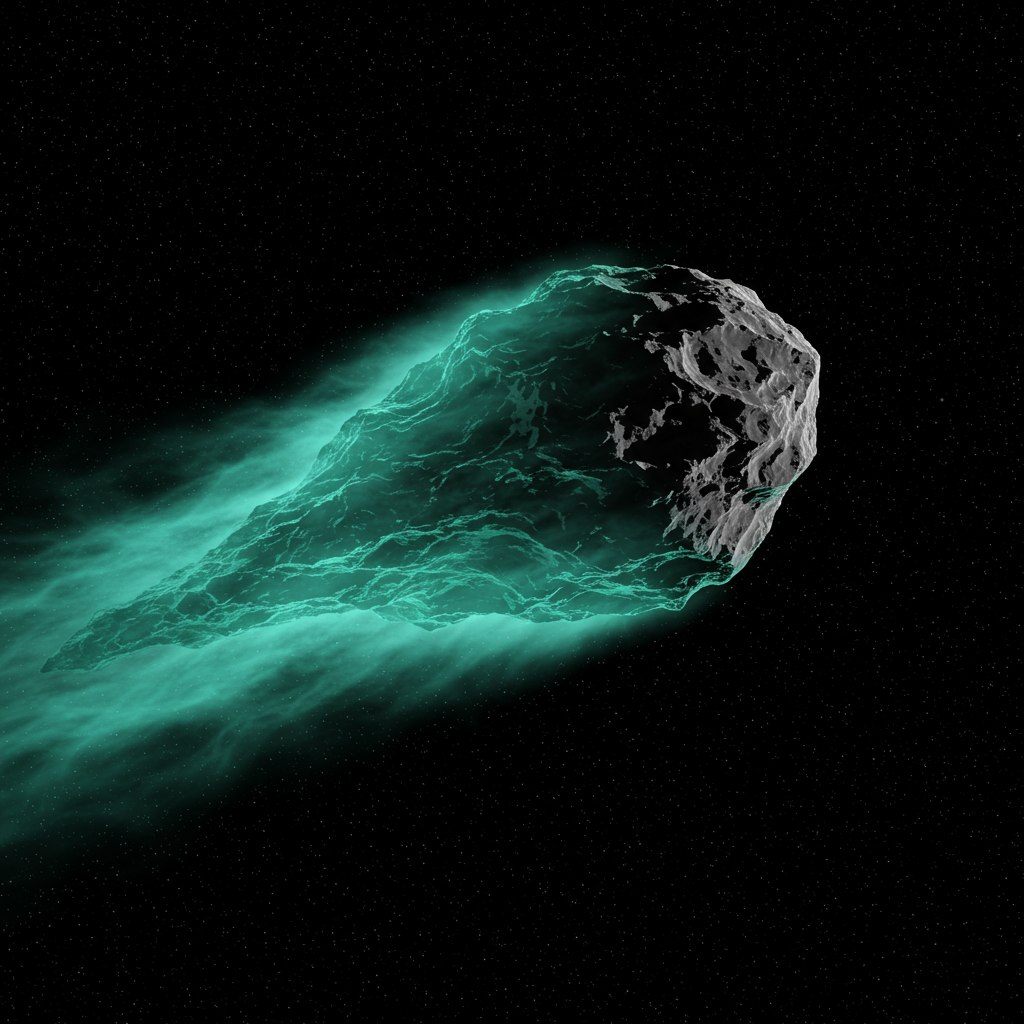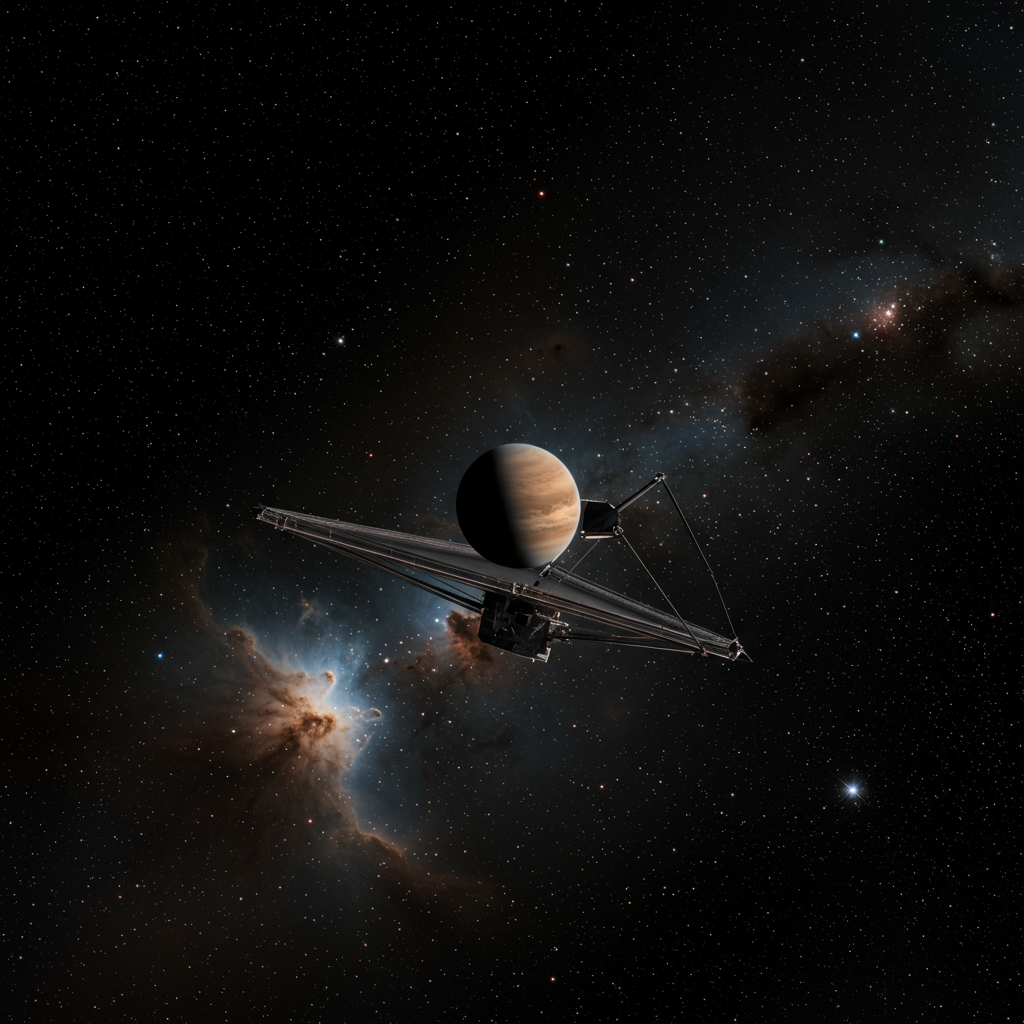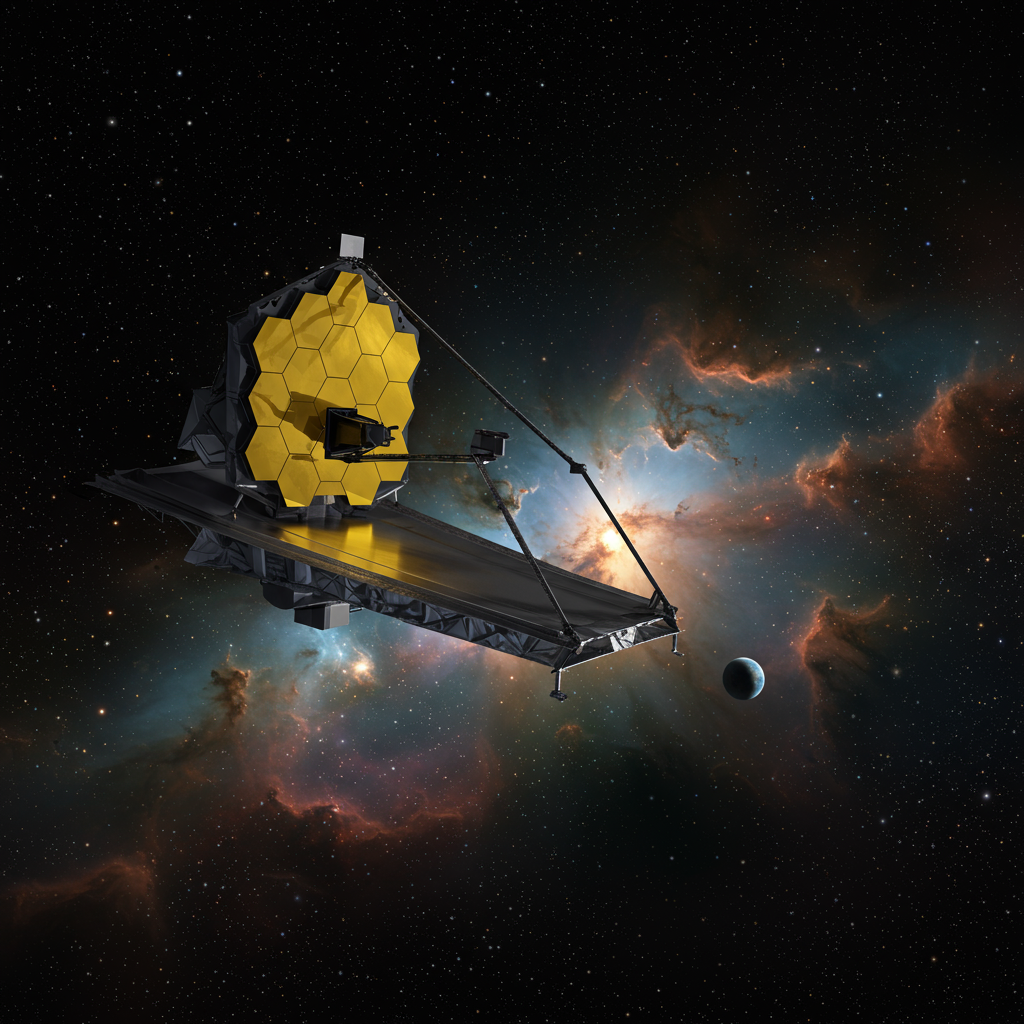Get ready, skywatchers! Astronomers have found a new visitor in our cosmic neighborhood. This isn’t just any space rock; scientists believe it’s hurtling towards us from far beyond our own solar system. The object, currently known as C/2025 N1 (and initially as 3I/Atlas), marks a potentially groundbreaking discovery. If confirmed, it would be only the third such interstellar object ever detected passing through our corner of the galaxy. This finding adds significant weight to the exciting idea that “interstellar wanderers” might be relatively common cosmic travelers.
A Cosmic Detective Story: How C/2025 N1 Was Found
The discovery unfolded like a true astronomical mystery. The object, first cataloged as A11pl3Z, was initially reported by the Asteroid Terrestrial-impact Last Alert System (Atlas) survey telescope. This particular Atlas telescope is located in Río Hurtado, Chile. The initial report came on a Tuesday.
Following this first sighting, scientists didn’t stop there. Nasa and other observatories around the world jumped into action. They meticulously analyzed data collected by various telescopes before the Atlas report. This extended observation window pushed the earliest sightings back to June 14. With this expanded dataset, experts gained crucial information. They were able to plot the object’s precise path through space. This trajectory analysis provided the first major clues about its origins.
The Telltale Sign: A Hyperbolic Orbit
How do astronomers determine if a visitor is from outside our solar system? The key lies in its orbit. Objects born within our solar system, like planets, asteroids, and most comets, follow elliptical orbits around the sun. These paths are closed loops, meaning the object will eventually return to roughly the same point in its orbit.
However, C/2025 N1 is on a highly eccentric, hyperbolic orbit. Imagine a path that curves around the sun but doesn’t form a closed loop. Instead, the object approaches the sun, makes a sharp turn around it due to gravity, and then heads back out into deep space forever. This hyperbolic trajectory is a signature of an object moving so fast relative to the sun that it escapes the sun’s gravitational pull entirely. Such objects typically originate from another star system or even from the vast interstellar void between stars.
Speed and Location
As of early July 2025, the object was estimated to be about 416 million miles away from the sun. It appeared to be traveling from the direction of the constellation Sagittarius. Its speed is quite remarkable. Relative to the sun, it’s believed to be whizzing through our solar system at approximately 37 miles per second (60 kilometers per second). This incredible velocity further supports its non-solar system origin.
Why This Discovery Matters
Finding objects like C/2025 N1 is a big deal for astronomy. For a long time, scientists only speculated about objects traveling between star systems. The first confirmed interstellar visitor was ‘Oumuamua, a mysterious, cigar-shaped object discovered in 2017. Then came 2I/Borisov in 2019, a comet that clearly originated elsewhere.
Dr. Mark Norris, a senior lecturer in astronomy, highlighted the significance. He stated that if C/2025 N1 is confirmed as interstellar, it will be the third known such object we’ve discovered. This growing number provides compelling evidence. It suggests that “interstellar wanderers,” objects ejected from their birth star systems, are not rare anomalies. Instead, they might be relatively common occurrences drifting throughout our Milky Way galaxy.
The outer regions of our solar system are vast and mysterious. Scientists suspect they might hold other unusual things too. This includes possibilities like the hypothetical Planet Nine or even rogue planets captured from other systems, as discussed in recent astronomical literature. The discovery of C/2025 N1 fits into this broader picture. It shows that our solar system interacts with the wider galaxy more than we previously thought. It reinforces that our astronomical capabilities are improving, allowing us to spot these fleeting visitors.
Unveiling the Nature of the Object: Comet or Asteroid?
When A11pl3Z was first spotted, its exact nature wasn’t immediately clear. Was it a rocky asteroid or an icy comet? Subsequent observations quickly provided clues. The Minor Planet Center, responsible for documenting minor bodies in the solar system, reported tentative signs of cometary activity.
Specifically, astronomers detected a marginal coma and a short tail. A coma is the fuzzy atmosphere of gas and dust surrounding a comet’s nucleus. A tail forms when solar radiation pushes this material away from the sun. These features are characteristic of comets. Because of these observations indicating cometary activity, the object was given the additional designation C/2025 N1. The “C” stands for comet, confirming its likely icy composition and active nature when heated by the sun.
Size Estimates and Safety
Early estimates of the object’s size were based on its brightness. Some suggested it could be as large as 12 miles (20 kilometers) in diameter. For context, that’s bigger than the asteroid believed to have caused the extinction of the non-avian dinosaurs! However, experts quickly tempered these estimates.
Colin Snodgrass, a professor of planetary astronomy, explained the caveat. Size estimates based on brightness typically assume the object is a dark asteroid. But if it’s a comet with a coma and tail, a significant portion of its brightness comes from the reflective dust and gas in the coma. This means the solid nucleus at the center is likely much smaller than the initial estimates.
Regardless of its exact size, there’s absolutely no cause for alarm on Earth. Nasa has confirmed that C/2025 N1 poses no threat whatsoever. It will remain at a safe distance. Its closest approach to Earth will be at least 1.6 astronomical units away, which is about 150 million miles. Ongoing surveys, like the one conducted by the Vera C. Rubin Observatory in Chile (equipped with a giant camera designed to spot transient objects like asteroids), continually monitor our solar system for potential threats. C/2025 N1 is not one of them.
Journey Through Our Solar System
Astronomers have plotted C/2025 N1’s projected path. It is expected to make its closest approach to the sun, a point called perihelion, around October 30, 2025. At that time, it will come within about 130 million miles of our star. This distance places it just within the orbit of the planet Mars.
After its brief rendezvous with the sun, the comet’s hyperbolic orbit dictates its future. It will then leave our solar system. It is expected to head back out into the vast expanse of interstellar space, continuing its lonely journey across the galaxy.
Catching a Glimpse: Observing C/2025 N1
As the comet approaches the sun, it’s expected to brighten. This is particularly true if its cometary activity increases. Dr. Mark Norris noted that by the time it reaches perihelion, it should become a relatively easy target for amateur astronomers.
However, don’t expect to see it with just your eyes. Jake Foster, an astronomer at the Royal Observatory Greenwich, confirmed that C/2025 N1 is not expected to be visible to the naked eye. But it should be visible through a reasonably sized amateur telescope. The best time for amateur observations is likely to be in late 2025 and early 2026. As scientists study the object more in the coming weeks, they will get a better idea of its realistic visibility.
For those eager to see it sooner, technological solutions are available. The Virtual Telescope Project, a network of robotic telescopes, is expected to host a live feed of the comet. They planned a broadcast on their YouTube channel from 11 pm UK time on Thursday following the announcement. This offers a chance to see the interstellar visitor from anywhere in the world.
The discovery of C/2025 N1 adds another fascinating piece to the puzzle of our cosmic neighborhood. It highlights the dynamic nature of space. Objects from other star systems are constantly drifting through the galaxy. Our ability to detect them is rapidly increasing. Each new interstellar visitor provides unique insights into the building blocks and processes of planetary systems beyond our own.
Frequently Asked Questions
What is an interstellar object and why is C/2025 N1 significant?
An interstellar object is a celestial body that originated outside of our solar system and is passing through it. These objects are not gravitationally bound to our sun. C/2025 N1 is highly significant because if confirmed, it would be only the third such object ever detected by astronomers, following ‘Oumuamua in 2017 and 2I/Borisov in 2019. Its discovery suggests that these “interstellar wanderers” might be more common in our galaxy than previously thought, offering unique opportunities to study material from other star systems.
How was C/2025 N1 discovered and how do scientists know it’s from outside our solar system?
C/2025 N1 was first reported by the Atlas survey telescope in Chile. Subsequent analysis of data from various telescopes extended observations, allowing astronomers to plot its trajectory. Scientists determined it’s likely interstellar based on its orbit. Unlike objects originating in our solar system which follow elliptical paths, C/2025 N1 is on a highly eccentric, hyperbolic orbit. This type of open path indicates the object has enough speed to escape the sun’s gravity, meaning it did not originate here.
Can I see this interstellar object, and is it a threat to Earth?
C/2025 N1 is not expected to be visible to the naked eye. However, astronomers anticipate that it should become visible through a reasonably sized amateur telescope in late 2025 and early 2026, especially as it brightens near its closest approach to the sun in late October 2025. Importantly, C/2025 N1 poses absolutely no threat to Earth. Nasa has confirmed it will remain at a safe distance of at least 1.6 astronomical units (about 150 million miles), far outside Earth’s orbit.
Conclusion
The identification of C/2025 N1 as a likely interstellar visitor is a thrilling moment for astronomy. It adds to a small but growing list of objects confirming that material travels between star systems. Its hyperbolic path leaves no doubt about its origins from beyond our sun’s gravitational influence. While it won’t threaten our planet, its passage offers scientists and amateur astronomers a chance to study a genuine piece of another star system passing through our own. As our telescopes and survey capabilities improve, we can anticipate finding even more of these fascinating interstellar guests, unlocking deeper insights into the universe beyond our cosmic home.
Word Count Check: 1139




